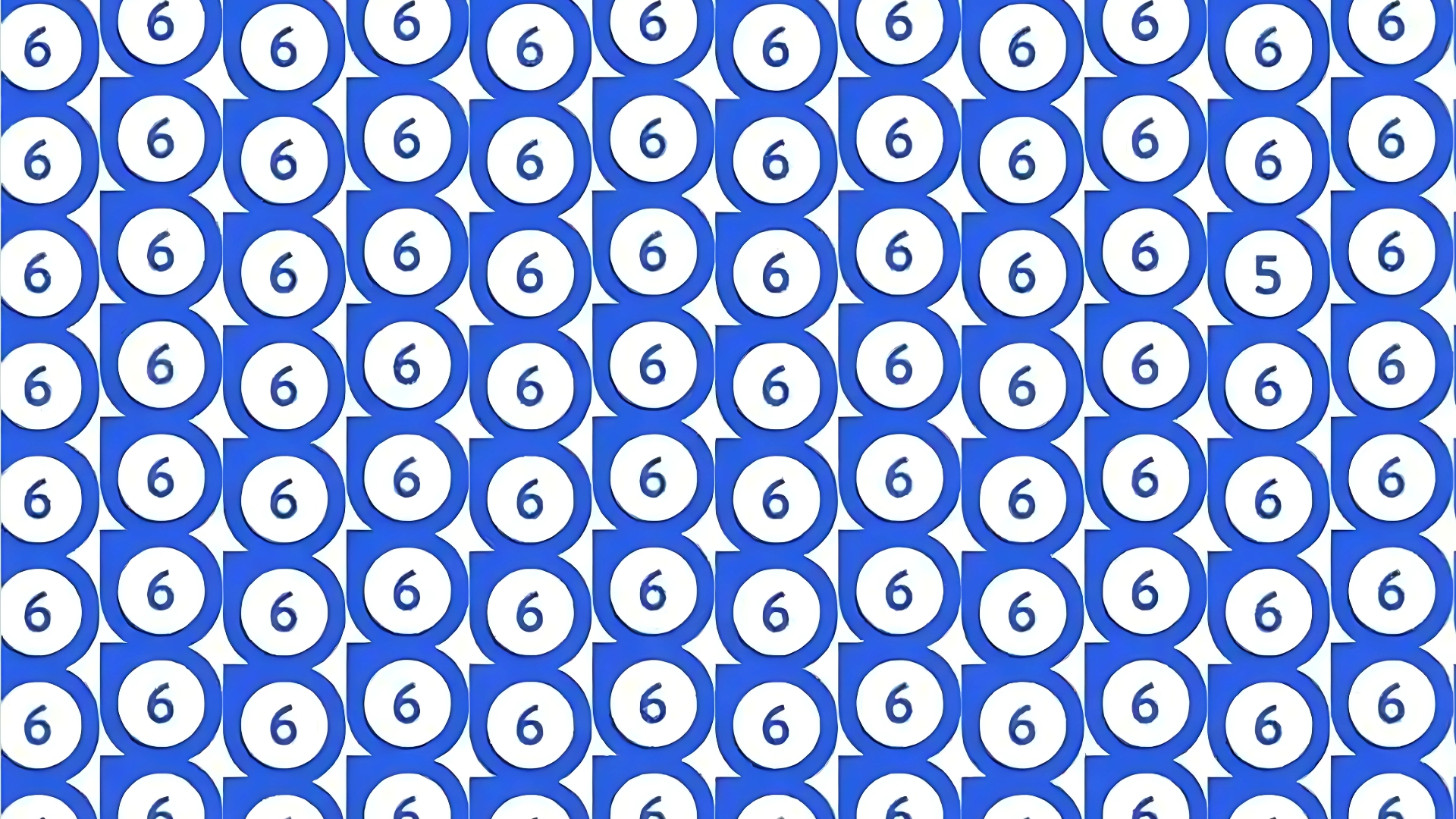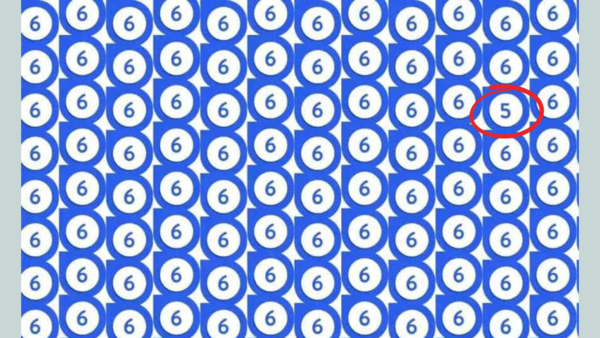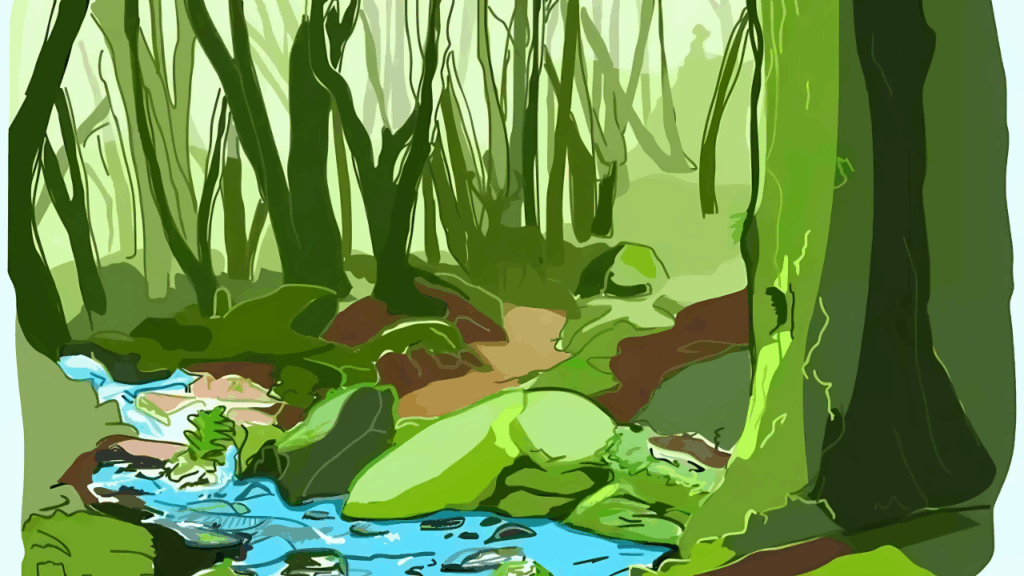Have you ever stared at something and couldn’t believe what you were seeing? That strange moment when your brain struggles to make sense of an image is truly fascinating.
Optical illusions aren’t just entertaining brain teasers—they’re windows into how our minds process visual information. These clever visual tricks exploit the gap between perception and reality.
When you look at an optical illusion, your brain is actively working to interpret what your eyes are seeing. Sometimes this process goes awry, creating a disconnect between what’s actually there and what you perceive.
The human visual system has evolved to make quick judgments based on limited information. This fantastic ability helps us navigate the world efficiently but occasionally leads us astray.
Table of Contents
The Challenge: Finding the Hidden Number 5

Today’s particular challenge tests the limits of your visual perception in a uniquely demanding way. Can you spot the cleverly disguised number 5 hiding among similar-looking numbers?
This test isn’t just about having good eyesight—it’s about how quickly your brain can distinguish subtle differences. The creators claim that only people with “4K vision” can find it within seconds.
The concept of 4K vision isn’t medical terminology but rather refers to exceptional visual acuity and pattern recognition abilities. It’s like having ultra-high-definition perception!
Take a moment to scan the image carefully. The number 5 is there, but it’s deliberately camouflaged to test your observational skills to their limits.
Why These Challenges Go Viral
In our scroll-happy digital age, these visual puzzles have become incredibly popular across social media platforms. There’s something uniquely satisfying about the “aha!” moment.
People love sharing their successes—or frustrations—when tackling these visual riddles. The competitive element adds a social dimension that keeps us coming back for more.
These challenges create a perfect storm of cognitive engagement, social interaction, and the human need to test our abilities against others. They’re digital-age versions of age-old puzzles.
The term “4K vision” itself is a clever marketing hook that plays on our familiarity with high-definition displays. It suggests exceptional visual abilities that go beyond normal perception.
Optical Illusion Test Answer

The Science Behind the Illusion
What makes finding the hidden number 5 so challenging? It comes down to the clever manipulation of visual elements that confuse our pattern-recognition systems.
Our brains are constantly looking for patterns and trying to make sense of visual information. When similar shapes are clustered together, distinguishing the outlier becomes particularly difficult.
The visual cortex processes information in fascinating ways, sometimes prioritizing the overall pattern rather than individual elements. This can make finding the deviant number surprisingly challenging.
When you’re searching for the number 5, your brain must work against its natural tendency to group similar shapes together. It must instead focus on identifying the unique characteristics of the target.
How Optical Illusions Benefit Your Brain
Engaging with these visual puzzles isn’t just entertaining—it’s actually good for your cognitive health! Think of them as a gym workout for your brain.
Regular practice with optical illusions can improve your observational skills and attention to detail. These abilities translate to real-world benefits in many aspects of life.
Scientists have found that challenging your visual perception can help maintain cognitive flexibility as you age. It’s like keeping your mental muscles toned and ready.
These exercises engage multiple brain regions simultaneously, creating new neural connections and strengthening existing ones. They’re a fun way to promote brain health.
Different Types of Optical Illusions
While our number 5 challenge falls into a specific category, optical illusions come in fascinating varieties. Each type exploits different aspects of our visual processing.
Physiological illusions occur when excessive stimulation of one type (brightness, color, movement) affects the perception of another. These directly impact the eyes and visual system.
Cognitive illusions play with our assumptions about the world. They challenge how we interpret visual information based on our expectations and past experiences.
Physical illusions are those where the physical properties of light create visual effects that don’t match reality. Mirages and rainbows fall into this interesting category.
Mastering the Art of Seeing
Want to get better at spotting the hidden elements in optical illusions? There are actually techniques you can practice to improve your visual detection skills.
Try systematic scanning rather than random looking. Move your eyes methodically across the image in a grid pattern to ensure you don’t miss anything.
Pay attention to negative space—sometimes what’s not there is as important as what is. The spaces between elements often hold clues to the illusion.
Adjusting your focal distance can help too. Sometimes looking slightly beyond the image or viewing it from the corner of your eye reveals details that direct focus might miss.
Beyond Entertainment: Practical Applications
Optical illusions aren’t just for fun—they have serious applications in fields ranging from psychology to design and even military camouflage technology.
Designers and artists use principles of visual perception to create more effective and engaging work. Understanding how we see affects everything from website layouts to architecture.
In clinical settings, certain optical illusions help diagnose visual processing disorders. They provide valuable insights into how individual brains interpret visual information.
Even military technology benefits from understanding optical illusions. Modern camouflage patterns are designed based on how our visual systems process patterns and colors.
Creating Your Own Illusions
Fascinated by optical illusions? You might enjoy trying to create your own! It’s a creative way to apply what you’ve learned about visual perception.
Start with simple pattern-based illusions like our number 5 challenge. Experiment with similar shapes where just one element differs in a subtle but detectable way.
Digital tools make illusion creation accessible to anyone. Simple photo editing software can be used to craft basic but effective visual puzzles.
Remember that the best illusions balance challenge with solvability. If it’s too obvious, it’s not engaging—but if it’s impossible to see, it becomes frustrating rather than fun.
FAQs About Optical Illusions
What does it mean to have “4K vision”?
This isn’t a medical term but refers to exceptional visual processing abilities—similar to how 4K displays show incredible detail.
Are optical illusions bad for your eyes?
No, viewing optical illusions doesn’t harm your vision. Any discomfort is temporary and related to mental processing, not eye strain.
Why do some people spot the hidden elements faster than others?
Individual differences in visual processing, attention patterns, and cognitive strategies all contribute to how quickly someone can solve a visual puzzle.
Can optical illusions reveal anything about my personality?
While fun to consider, there’s limited scientific evidence that what you see in ambiguous illusions reveals significant personality traits.
How can I improve my ability to solve optical illusions?
Regular practice, developing systematic scanning techniques, and learning about common visual tricks all help improve performance.
Are children better at solving optical illusions than adults?
Research shows mixed results—children sometimes see different aspects of illusions due to less rigid perceptual frameworks, but adults often have better attention strategies.
Do optical illusions work on animals?
Yes! Many animals experience certain types of optical illusions, suggesting similar visual processing mechanisms across species.
Can I use optical illusions to improve my creativity?
Absolutely! Working with visual puzzles encourages flexible thinking and can inspire creative approaches to problem-solving.
The world of optical illusions invites us to question our perception and enjoy the fascinating quirks of our visual system. Whether you spotted the elusive number 5 or not, exploring these visual puzzles offers both entertainment and insight into the remarkable way our brains interpret the world around us.






